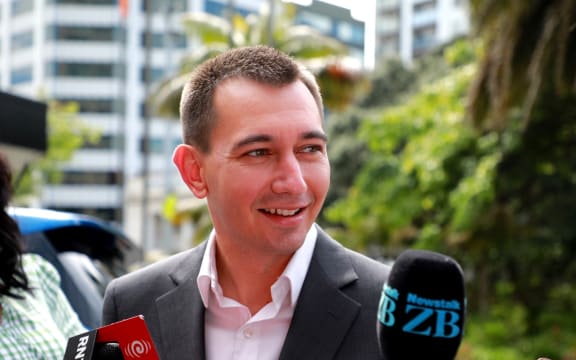A road safety charity believes a U-turn on lower speed limits on some roads will cost lives.
The government plans to stop what it calls blanket speed limit reductions.
Under the Labour government, Waka Kotahi / NZ Transport Agency introduced 80km/h speed limits on some highways, and lowered the limit to 30km/h around schools and some suburban streets.
Transport Minister Simeon Brown says he wants a system that gets people where they want to go faster, and he told Checkpoint on Tuesday he plans to introduce variable speed limits around schools that only apply during drop-off and pick-up times.
Caroline Perry from Brake NZ thinks that is a big mistake.
"Evidence shows that the simpler we make it for drivers to understand what speed limits are, the easier it is for us to all keep to those speed limits and to understand what's needed around different areas of our roads," she told Checkpoint on Wednesday.
"That's why one of the reasons why it's good to have it in place at all times as well, but also 30km/h not only around schools but in urban areas and communities has wider benefits too. It makes it feel safer. It helps to encourage people to walk and cycle more, which has environmental and health benefits too and it also helps to ease congestion."
Brown told Checkpoint there were a range of factors that went into making a road safer, including testing for intoxicated drivers or drug-testing, as well as fixing and building infrastructure.
He cited the Waikato Expressway - which has perhaps the highest speed limit in the country at 110km/h - as "the safest road" in the country.
Perry rejected that reasoning.
"It's not really an appropriate example to use because it's been built to a five-star safety standard," she said.
"It's got various safety features like medium barriers, it has slid roads - not intersections - it's essentially a motorway.
"And when you look at the international road assessment programme… roads that are built to that standard can operate more safely at higher speeds. But as I say, the vast majority of our road network is not built to that standard and there are lots of other hazards around them."

Simeon Brown. Photo: Nick Monro / RNZ
Only having reduced speed limits around schools ignored when and how schools are used by the community, she said.
"The issue with drop-off and pick-up times is that it assumes that there are only children, pedestrians, cyclists around at that time. And that's not the case.
"There are lots of schools that also have childcare centres, playgrounds, swimming pools, other community facilities that are used at different times and all sorts of breakfast and after-school clubs, sports on a weekend, school holiday programmes.
"And so there are so many different examples from school to school as to when children are going to and from school as to when those facilities are in use by the wider public as well. So just having lower speed limits at drop-off and pickup time isn't enough."
New Zealand's annual road toll fell two-thirds between the mid-1980s and 2013, when it hit a six-decade low - even without taking population growth into account - of 253.
It has since gone back up again, hitting a recent high of 378 in both 2017 and 2018, before dropping over the next few years, before rising again to 374 in 2022.
Perry said it was "extremely frustrating that we're having the same conversations around speed in 2023 despite a wealth of evidence from both New Zealand and overseas about how lower speed limits help to reduce road death injuries and have wider benefits as well".
"In terms of speed, it's such an important part of road safety because whether or not it's the cause of the crash, it will be a factor in the outcome and the likelihood of someone being killed or seriously injured.
"So basic physics tells us that the faster you go, the bigger the impact and the more likely you are to be killed or seriously injured."
Research from Austroads - the Association of Australian and New Zealand Road Transport and Traffic Authorities - showed the risk of death increased from 10 percent if a car was travelling at 30km/h and collided with a human to 80 percent if a car was going at 50km/h.
"So whilst we have some motorways that are built to very high safety standards that can take faster speeds, most of our road network is not and has an awful lot of hazards and has speed limits attached to them that do not match the conditions of the road," Perry said.
Brown said allowing faster speeds would boost economic activity, and said analysis by Wellington City Council found lowering speed limits to 30km/h "was actually going to have far greater costs than benefits to the city".

